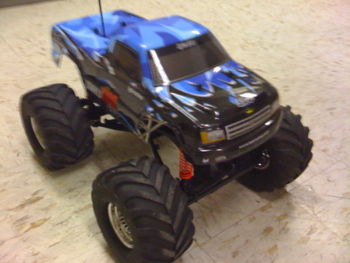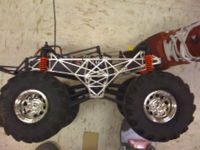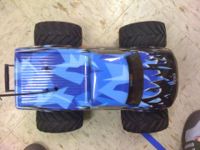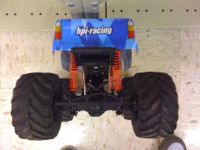RC rock crawler truck redesign
From DDL Wiki
Executive Summary
This stage of our project required our group to analyze opportunities for improvement. We went about collecting data and observations in many various ways in order to diversify our understanding of the problems. Our first action towards product improvement was a basic brainstorming session where our group came up with 100 possible ideas from improvement, ranging from technical improvements such as higher torque to aesthetic changes such as having colored wheels. We wanted our improvements to intrigue both the amateur and the professional.
Next, our group conducted novice testing. In order to expand our consumer market base we have decided to create a product that can be used by everyone, not just the professional. In order to examine novice consumer needs, a 10 foot long rock crawling course was constructed. The course consisted of varying sized rocks followed by an incline. All participants were asked to fill out a questionnaire regarding their experience. (i.e.: what problems did you encounter while trying to complete the course?) From this data we realized that the most common problems for the amateur user was the car flipping over.
In order to obtain findings on a professional level, our group went to an indoor rock crawling facility. Two hours were spent watching competitions and talking with professional rock crawlers. Here we obtained more detailed findings that were all technically related. We talked to five professionals throughout the time spent at the facility, all having a very good knowledge of the HPI Wheely King. For the professional, the main problems with the stock Wheely King are its poor weight distribution, flimsy parts, and lack of a locked differential.
From all of the data and user opinions collected over the last three weeks our group was able to come up with …..x…..design improvements which we studied through the use of a Pugh chart. Brad/Zahoor….. can you put 2-3 sentences here about the pugh chard……From this study we concluded that ……….. are the best design improvements b/c…..
Research and Observations
For our research, we decided to get as many varying opinions as possible. We wanted to know what the novice thinks of the original car as well as a professional. (For the sake of simplicity, we decided to call anyone that competes at rock crawling a professional) For the novice research, our group set up a simple course that every participant was instructed to use. The course was 10 feet long and consisted of varying sized rocks as well as a slippery incline. The goal was to make it across the course without flipping the car or having to use reverse. Time was not a measured factor. Each participant was given 2 minutes before attempting the course to familiarize themselves with the car. After completing the course the participants were then asked to fill out a questionnaire so we could obtain feedback on the cars performance. From our novice research we found that the most common problem was the car tipping. The second most common problem was the need to reverse because the car could not climb over bigger rocks. This suggests to us that the car needs to have a more flexible chassis in order to keep its balance when going over uneven surfaces.
For our professional research our group went to an indoor rock crawling facility located in Beaver Falls, Pennsylvania. We were invited by the owner of the hobby shop where we purchased our car. The facility was an empty warehouse that was rented out for the weekend. We spent two hours at the facility watching competitions and talking with numerous professionals. As we had previously thought, everyone in the facility knew of the HPI Wheely King and everyone was quick to offer their opinion of the car. It was the general consensus that it was a good base model to transform into a rock crawler, but had some distinct flaws. Everyone first mentioned its weight imbalance, saying that a car designed to do wheelies is not designed to crawl rocks or go up steep inclines. Second, its flexibility was mentioned, saying that it had decent flexibility for a stock model but needed more axle freedom in order to climb the larger rocks without flipping.
Overall our research was very beneficial. We were able to identify the needs of both the amateur and the professional, giving us the advantage of designing an improvement kit that can be sold to a very diverse market. As well as being able to identify needs, our research provided us with professional advice that is now directing us to an improved product.




